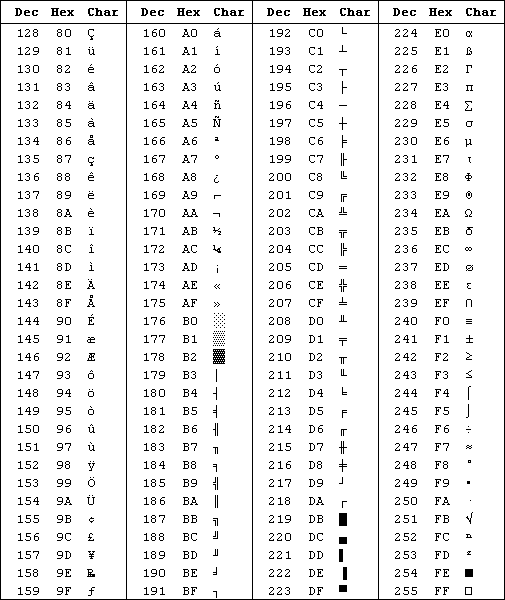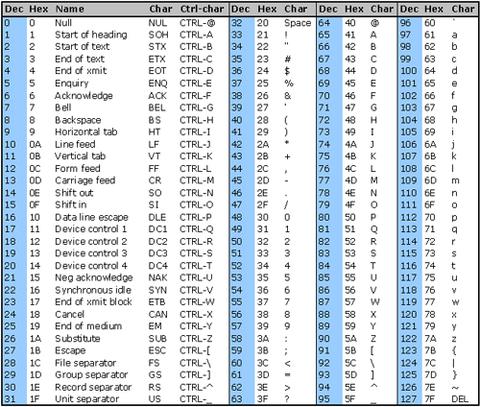Difference between revisions of "ASCII"
(→Extended ASCII) |
|||
| Line 7: | Line 7: | ||
==Extended ASCII== | ==Extended ASCII== | ||
This used an additional bit (ie 8 bits) to allow for additional characters. Overall extended ASCII supports the original ASCII values but adds the following: | This used an additional bit (ie 8 bits) to allow for additional characters. Overall extended ASCII supports the original ASCII values but adds the following: | ||
| − | [[File:Extended ASCII. | + | [[File:Extended ASCII.gif]] |
==Unicode== | ==Unicode== | ||
Revision as of 13:47, 31 December 2016
ASCII stands for American Standard Code for Information Interchange. It is a character system that lets computers and devices to process letters, numbers and characters. It is represented by a 7-bit binary number that is either 0's or 1's. HTML (HyperText Markup Language) are based on ASCII. There are 128 characters that can be represented using ASCII.
Below is a table showing all of the characters that can be represented using ASCII
Extended ASCII
This used an additional bit (ie 8 bits) to allow for additional characters. Overall extended ASCII supports the original ASCII values but adds the following:

Unicode
Unicode is different coding system and is becoming more common. It is a 16-bit code, giving enough combinations to store every character in every alphabet (e.g. Urdu, Chinese) plus a vast range of other characters, control and communication codes.
The 16-bit code can represent 65536 different characters.
It maintains compatibility with ASCII by using the same code values as ASCII (ie codes 0-255 are the same as the ASCII table). So if you take ‘z’ and its ASCII value 122 (0111 1010 in binary), the unicode value is still 122 the binary will be 0000 0000 0111 1010.
